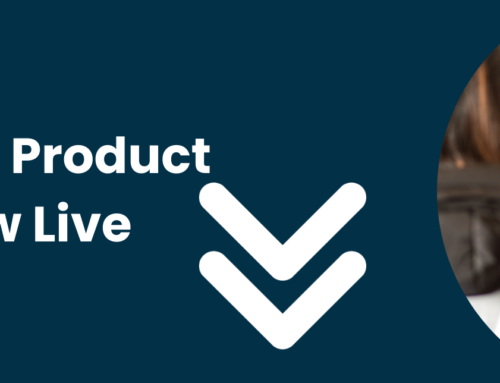Hi everyone and welcome to this weeks protection update
So, if you joined Bob and me at any of the roadshows, you should now know that we’ve got a very special offer in which you can try CI Expert for 3 months at a vastly reduced cost. Just £10 per month plus VAT.
By the way, for those of you in the South East, we’ve now got a new date for our postponed roadshow and it will be held on Tuesday 6th September. Same venue, Canary Wharf in London.
I’ve added a registration link to this week’s protection update – plus, we’ve written directly to each of you who were already on the previous date in June which we had to postpone due to those rail strikes.
CIExpert – getting into the detail
As we approach the heart of summer, things inevitably slow down a little so it’s a perfect time to take a look at CIExpert and give it a try.
It’s improved over the past 10 years since it came onto the market and I’m going to demonstrate one of the reasons why it was originally invented.
I’ve got a client called John Smith who is 32 and he has one young child.
I’ve entered his basic details into CIExpert and it immediately gives me the opportunity to take a look at the different covers available on the market today and these are in score ranking. That is the breadth of coverage which links to the likelihood of a payout from these policies.
You can see here that HSBC Life, our newest addition to our protection panel scores right at the top in terms of the quality of cover.
Now if you want, you can compare current policies on the market today and you’ll be able to find out the reasons why one policy scores higher than another policy.
You can see here that Royal London have made recent improvements to their Critical Illness Cover and it now scores in second place. They have particularly strong children’s cover included on their enhanced version.
Guardian also scoring very highly – there’s not a lot of difference between these at the top when you look at the overall CIExpert scores.
Then we’ve got Liverpool Victoria, AIG and Zurich – all of which are the enhanced versions of their Critical Illness Cover. Then we’ve got Legal & General, Aviva and so on…
So in this example, let’s just say I’ve going back to do a review with my client John.
He’s already got a Critical Illness policy that he took out a few years ago. It’s actually with Friends Life which no longer exist. At the time, it was a pretty strong policy but how does it compare today?
I’m thinking of recommending a replacement of this old policy with a HSBC Life Critical Illness policy.
So what can we see…
Straight away, Friends Life is scoring at 5543 and HSBC Life is scoring at 6665. That’s a difference of 1122 which is a swing of over 20% more coverage on the HSBC Life policy.
What we can see here is that the Friends Life policy that John already has, has 5x conditions which are better than the conditions included within the HSBC Life policy.
But the HSBC Life policy has 61 conditions which are superior to what John has within his Friends Life policy.
We can drill into a bit more of the detail by clicking on the ‘Full score breakdown’ button.
We can see here that in terms of that 20.24% difference, 3.14% is attributed to full paying conditions, 7.78% is attributed to additional payments but it’s the children’s coverage which has the most significant difference at 9.32%.
You can see here that 107 conditions on the HSBC Life policy but only 53 conditions on the Friends Life policy.
Let’s take a look further down this list and into the report output.
Straight away we can see that accidental hospitalization isn’t covered on the Friends Life policy. The thumbs up on the HSBC Life side shows theirs is a superior version, but that’s obvious in this case because its not on the Friends life policy.
The little pie chart is the symbol to tell us this is an additional payment.
Let’s see some of the detail… I’m just going to click on this line for additional hospitalization.
There’s confirmation it’s not included in the existing policy.
But with HSBC Life, it’s a £5000 payout and the wording underneath describes how this works within the policy.
If we look underneath, again we get a further description of what this condition is.
So here you can see; being admitted to a hospital due to an accident that has caused a physical injury and on the advice of a medical expert having to stay in hospital for at least 28 consecutive days.
Incidence rate… There aren’t any figures available to analyse how useful this feature is within the new policy. I guess being in hospital for 28 days is a very long time?
Claims statistics… There have been some claims on this type of condition
Let’s take a look at another one…
If we scroll down, this time we will look at something which is covered on both plans…
Coronary Angioplasty
Another additional payment condition, that’s where someone has blocked arteries and needs surgery to unblock them – typically with a stent.
We can see here that John does have it on his old policy but the new version of this is superior.
Straight away, one big reason the HSBC Life policy is better is because they pay more. It’s upto £50,000 as opposed to £25,000 with the Friends Life policy.
But when we get into the detail, can you see this line in the old policy – “The above operation must be to treat at least 70 percent diameter narrowing. If an operative procedure is only performed on one main coronary artery there must be at least 70 percent diameter narrowing in another main coronary artery.”
The HSBC Life policy doesn’t say that.
Now you don’t need to have deep medical knowledge using this system because all of the hard work has been done for you. The scoring mechanism takes all these factors into consideration when assessing which of these conditions is superior.
Looking at the claims statistics here, its interesting to see this comment which say “Figures from insurers suggest around 0.50% of claims originate from coronary angioplasty procedures. This possibly understates the worth of this cover as these figures are averaged and include figures from insurers that no longer, or never did, offer such cover.”
Heart Attacks
Let’s do one more… Heart attacks.
This is a big reason why people claim on critical illness policies in general, but not all definitions are the same.
Now you might notice that the thumbs up symbols are in different colours and you’ll see these as bronze, silver and gold when you hover over.
The HSBC Life Heart Attack definition is classed as a ‘gold standard’ version of this definition by CIExpert.
Looking at the old Friends Life policy, it’s talking about troponin levels as part of the equation to assess whether this claim can be made.
HSBC Life doesn’t have any of that.
It says “There must be a definite diagnosis of an Acute Myocardial Infarction by an attending UK consultant cardiologist as defined by either the current recognised “International Standard” or any future versions. The diagnosis of Acute Myocardial Infarction must be supported by relevant medical reports, tests and investigations.”
In terms of incidence rates, you can see that 100,000 heart attacks are suffered each year.
It also says… “Men under age 50 are over four times more likely to suffer a heart attack than women but between ages 50 and 65 the difference reduces to around three to one. Heart attacks have reduced since the ban on smoking in public places.”
Now do you want to get in to that level of detail for every condition that is being compared here?
Probably not, but you don’t have to because the system has all the detail of that information.
Let’s produce a report because I’m going to make a recommendation to replace this old policy with this new one.
And you can see here I can download a summary report, full compliance report or both.
I’ll download both.
This is the summary report and you can see here is just displays each condition in a similar way we saw them within CIExpert.
And it’s nice and clear to see all the benefits for replacing the policy – 2 gold, 11 silver and 48 bronze in favour of HSBC Life.
But for the Friends Life policy there are no gold conditions which are superior, 1 silver condition and 4 bronze conditions which are superior on the old Friends Life policy compared to the HSBC Life policy.
Let’s just remind ourselves about what gold silver and bronze actually mean. If we scroll back up the report you can see that gold means conditions which have an important impact on the overall statistical ranking of these two policies.
So in this example it’s heart attacks and coronary angioplasty.
Silver means a moderate impact on the overall statistical ranking of these two policies and bronze means minor impact.
That’s just one example of how it works but its powerful and for me; it’s a crucial tool to have in your kit bag if your advising, recommending and reviewing protection with your clients.
I’ve added the links to the CIExpert landing page on our adviser site where you can take a look at the special offer and I’ve also added the links to the forthcoming webinars.
Protection Webinars in August
And one more thing…
In August, we will be running some webinars on Business Protection and Critical Illness.
So, I’ve added registration links to this week’s protection update and you’ll see banner adverts over the coming days and weeks. Just fill out the simple registration and I’ll look forward to seeing you there.
I’m going to have a bit of annual leave now so in my absence, I’ve got a couple of special guests as stand in hosts of my Friday protection update so watch this space.
Have a great weekend everyone and I’ll see you soon!



